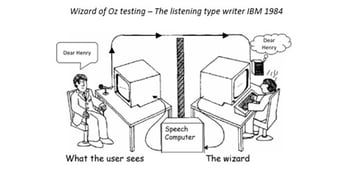Low-Code – a revolution in digital transformation
Posted in Digital, Operational Transformation
December 2019
3 minutes reading time
‘Digital Transformation’ means different things to different people. It can be made to sound terrifyingly complicated, mind-bogglingly technical and spectacularly expensive.
However, when boiled down to its simplest description, Digital Transformation is streamlining a labour-intensive business process, through the use of digital technology.
Digital transformation can speed up business processes, make them less subject to manual error; automate boring or repetitive steps; and provide workflow, audit trails and reporting tools to enforce positive behaviour.
Common digital transformation challenges
There are two major challenges that face organisations moving towards digitally transformed utopia.
The first challenge is that existing systems are often a combination of manual processes, bulging filing cabinets, legacy technologies, email, spreadsheets, CRM, ERP, websites and intranets, bespoke software and applications.
They tend to have grown organically by necessity and often boast a long history of compromises, cut corners, fudges, bureaucratic necessities and incompatibilities – held loosely together with a combination of string and prayer. Without an experienced human to apply their acquired knowledge, ingenuity and common sense, the whole package can easily fall apart.
The second challenge is that replacing these systems with newer digital technologies and processes does not necessarily constitute an improvement – especially when the new systems that are purchased (often at great expense) force a new way of working on an organisation that is counter-intuitive, over-simplified or over-complex, generic and user-unfriendly. The outcome is inevitably that the transformation process breeds distrust of technology, and resentment of those who impose it.
The typical approach to digital transformation
A successful digital transformation project is rooted in a deep understanding of processes, aims and outcomes, and also consideration of user needs, whether supporting your long-suffering staff, improving your customers’ experience, or giving your Marketing Director the data needed to make decisions. Digital Transformation should complement and augment best practice for your organisation. It should ultimately make people’s lives easier.
However, finding and developing new digital systems and applications that exactly mirror (or improve) existing processes is a crapshoot. Software sales guys will always talk up a package’s configurability and flexibility – but the reality is that compromises will need to be made and organisations inevitably end up changing their processes to meet the limitations of the software that they have purchased, or by purchasing additional modules and add-ons to augment core products. By this stage, your charming salesman is long gone, and moved onto his next willing victim.
The alternative is to build everything bespoke to an organisation’s exact specification, but whilst this approach can deliver something that is truly unique to your organisation - it comes at far greater cost, both in development and in longer term support. Future changes and scope alterations mid-stream can come at considerable expense and delay.
The Low-Code revolution
Low-Code development presents an alternative approach to tackling these challenges. Low-Code platforms allow non-coders to build business applications, typically using drag and drop style visual interfaces to produce usable, functional and attractive business applications. These are not gimmicky toys used to produce little, throwaway widgets – enterprise level Low-Code platforms are now capable of producing highly complex, stable applications.
This shift has been recognised by some of the world’s largest organisations across healthcare, banking government and manufacturing. Aviva’s call centre? Low-Code. US Marines recruitment? Also, Low-Code. Barclays fraud detection? You guessed it… Low-Code.
The advantages of Low-Code go far beyond simply being able to develop rapidly, as the skill sets required to develop enterprise applications need less programming and database knowledge and are closely akin to the skills of a Business Analyst, product owner or process expert. Low-Code techniques democratise the process of designing applications and put a lot of power into the hands of the end-user and process designer.
Building Low-Code applications becomes a collaborative process where iterative changes and tweaks are expected and actively encouraged. Changes are made in hours, rather than weeks, and users can continually test and refine throughout the development cycle.
Factor in the full audit trails, workflow tools, inbuilt reporting, interoperability with existing legacy platforms, document management, cloud scalability, and the Low-Code platforms’ inherent compatibility with Robotic Process Automation and AI services – a low code approach becomes not just an option. The only sensible choice is to join the revolution.
Your next step - to explore the strengths and weaknesses of the various Low-Code platforms and their suitability to meet your challenges. CDS are Appian development partners.

